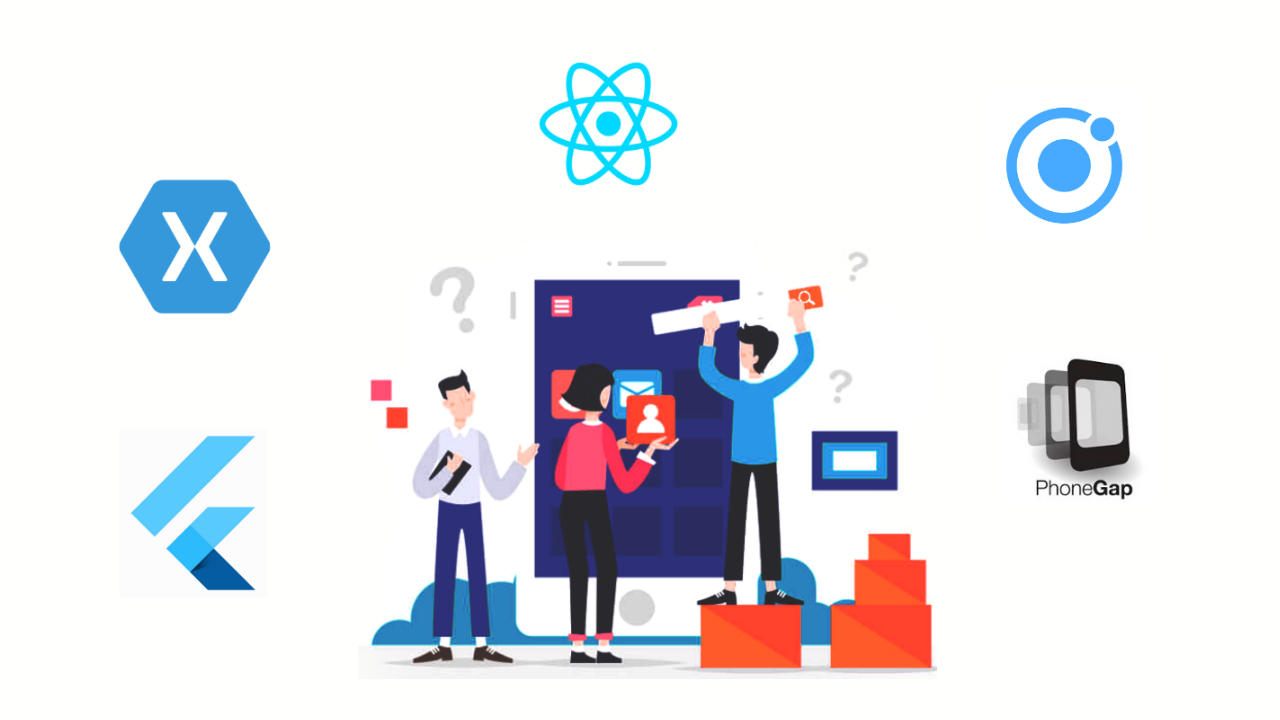
Cross-platform app development is cost-effective, time-saving, and ideal for businesses in 2025 to reach both Android & iOS audiences quickly, without heavily compromising on user experience.
Here’s what you will learn:
Mobile apps are a necessity for businesses today, if they want to target a segment of the customers. And it is not just about reaching out across one platform, rather you need to be omnipresent. Android and iOS are the most significant mobile platforms. Budgeting is usually an issue that challenges the businesses that want to have native apps. This is the reason for the growing popularity of cross platform app development company as it has your business covered for both Android and iOS.
How would you build one? Which tools would you use? In this article, we’ll get into the details right away.
Table of Contents
Understanding the Basics
A cross-platform app uses a single codebase for all platforms. That means the cost of developing an app drops by 50% to 60% (Source: LinkedIn). Well-known brands like Walmart and BMW have developed their apps in this way.
Having a single shareable codebase also means that your developers will spend less time in writing code for iOS and android separately. You’ll be able to reach your audience faster without compromising on the user experience.
Difference Between a Native and a Cross Platform App
A native app is a standalone app that works specifically for an operating system. These apps are compatible with the system’s hardware and software features such as camera and push notifications.
While some businesses prefer creating a native app, cross platform app development has gained traction. Even though cross platform apps share similarities with native apps, there is a difference:
|
Parameters |
Native App |
Cross Platform App |
|
Debugging |
Uses native debugging tools |
Depends on the framework |
|
Codebase |
Separate codebases for different platforms. |
Single codebase for different platforms. |
|
Rendering Engine |
Native |
Native |
|
Dependency |
Less dependent on tools and libraries |
Dependent on different tools and libraries |
|
Time to Market |
Time consuming |
Faster |
|
Cost |
High |
Affordable |
|
Tools |
Appcode, Android Studio, XCode |
Flutter, Xamarin, React Native |
Best Cross Platform App Development Frameworks
Choosing the right framework for developing a cross-platform app is important. Thankfully there are a few for you to choose from:
1. React Native
Tech giants like Microsoft, Xbox Game Pass, and Skype all used React Native. It’s an open-source platform that was developed by Facebook in 2015.
Benefits of React Native:
- Developers can see the changes happening live thanks to fast refresh feature.
- User interface can be customized easily.
- Large community of developers who share their tech knowledge.
- In versions 0.62 and later, there’s a default mobile app debugger called Flipper. It’s used to debug mobile apps and provides tools like log viewer.
If you want to get your app made with React and need expert guidance – Get in touch with a react native app development company.
2. Flutter
Released by Google in 2017, Flutter is a one of the popular frameworks for cross platform app development. Alibaba and Google Pay are some examples.
Key Features:
- Flutter’s hot reload lets you see changes as soon as you modify the code.
- It relies on its own rendering engine.
- Supports Google’s Material Design that can be used for developing visual and behavioral widgets.
- Enables developers to work seamlessly with Continuous Integration platforms such as Travis and Jenkins
Flutter app development has been trending over time, due to its ease of use and popularity.
Read More: Why Flutter is Best For Cross Platform App Development
3. Ionic
Released in 2013, developers can create a single codebase for mobile apps with HTML, CSS, and JavaScript. BBC and TMobile are some common examples.
Key Features:
- It comes with ready-made pieces (like buttons and menus) that you can use to create your app.
- Ionic works with plugins called Cordova and Capacitor. These plugins let your app use phone features like the camera and voice recorder.
- Includes a command-line tool called Ionic CLI. This tool helps you create and build your mobile apps.
Like Flutter and React Native, Ionic also has an active developer community where you’ll find solutions to development challenges.
4. PhoneGap
PayPal here and Nike Training Club have used PhoneGap for their cross-platform app development. JavaScript, CSS3, and HTML5 are used to build mobile apps for iOS and android.
Key Features Include:
- Allows developers to share the app with the team for getting their feedback
- Offers a cloud solution for creating the app directly
- Provides features such as access to third-party tools and numerous plugins
- Uses an intuitive desktop for app development and later serves this app created on the desktop to the connected mobile devices.
5. .NET MAUI
Owned by Microsoft and released in May 2022, .NET MAUI allows developers to build cross development apps with C# and XAML. Some notable examples include NBC Sports Next, Escola Agil, and Irth Solutions.
Key Features Include:
- Let’s you use phone features like GPS across different types of devices.
- You only need one project to create apps that work on all devices.
- You can change your app’s code while it’s running and see the changes instantly without restarting the app.
How To Choose the Right Framework ?
Tools will evolve and newer ones will soon be introduced on the market. Given the fact that there’s a huge variety of tools available for cross platform app development, how will you choose the right one? Here are 5 ways:
Expertise of your Team
Before using a specific tool, check the expertise of your team. If you want to adopt a new technology and your team doesn’t have relevant knowledge or experience, consider hiring developers or offering them training.
UI Customization
If the user interface is crucial for you, consider using frameworks like React Native. React native app development will help developers in sharing the UI across devices like Android, Mac, and iOS.
Security
Ensure that the framework you choose offers a high level of security. One way to do this is to check the security problems listed on the framework’s public bug tracker.
Framework Capabilities
Each of these frameworks has its own pros and cons. Ensure that you’re able to quickly test your app and it is compatible with your system’s hardware.
Resources Availability
The amount and quality of learning materials for a framework can show you how easy it will be to use. Good official guides, conferences, and online courses are signs that you’ll be able to find the help you need when building your app.
For example:
Flutter app development has a large community where developers are actively engaging with one another. You’ll find answers to glitches and useful resources.
Read More: Best Mobile App Development Frameworks In 2025
The Takeaway
In summary each framework has its own strength. It totally depends on projects requirements development team expertise and target audience. Cross platform app development is a smart choice for businesses that want platform-wide coverage with apps that are cost-effective and faster-to-market.
The idea is to choose the right development framework and collaborating with the right development partner can make all the difference in this context.
Frequently Asked Questions
Q1. What’s the most popular cross platform app development?
Currently, Flutter and React Native are popular choices for building cross platform apps. However, other tools like PhoneGap, .NET MAUI, and Ionic are also popular.
Q2. Can I access native app features using cross platform development?
Yes, most frameworks like Flutter and React Native will help you access native app features like camera and GPS. However, you will need to write code for complete functionality.
Q3. How can I test my cross-app platform development?
To ensure quality, here are some strategies that you can follow:
- Unit testing
- Integration testing
- UI testing
- Continuous Integration (CI)
- Real device integration




